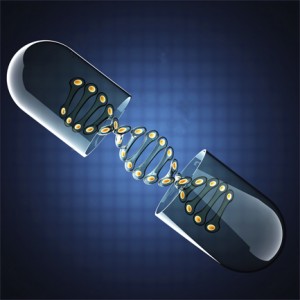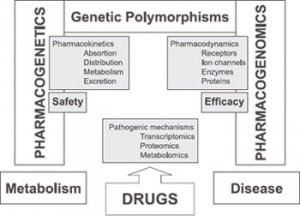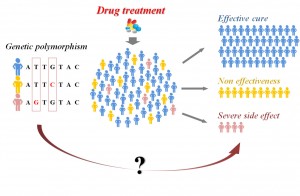
Pharmacogenomics studies gene variations among individuals and groups of people that affect the responses to medication. The modern view of pharmacogenetics is it will help provide a “personalized medicine” to patients depending on their genome composition. The goal is to reduce adverse effects to medications, lower the cost of therapies, and improve efficacy (Meyer 2004). Doctors will have a better idea of what drug and dose to safely prescribe patients. Ways of doing this are looking at polymorphisms in genes that may encode for determinants of drug effects. These include transport, enzymes metabolism of drugs, receptors or ion channels (Meyer 2004).

In the 1900s Sir Archibald Garrod came up with the concept of “chemical individuality” of man and carried out the first study on common genetic polymorphisms associated with response to chemicals. His experiment tested patient’s ability to taste a foreign chemical. Garrod was testing for the inability to taste (taste blindness) to phenylthiocarbamide (PTC). It was found that taste blindness is inherited as an autosomal-recessive trait. These were clues that varying genetic components, as well as race and ethnicity being recorded, respond differently to chemicals (Meyer 2004).
To establish a drug-profile of individuals, single nucleotide polymorphisms (SNPs) are sequenced and their frequencies are used for markers of genetic variation. High density genomics maps of SNPs that are inherited together are available online, like at International HapMap Project. This provides information about the phenotypic response of the gene. Patients can be divided into groups based on their genomic composition and marks to predict treatment (Sadee et al. 2005). Also, entire mRNA products of a genome can be looked at to find nuclear receptors and transcription factors that induce transformation of drugs(Meyer 2004).

Alteration of genes can be caused by imprinting or chromatin remodeling when there are no polymorphisms. Epigenetic modifications can be made on histones and DNA like methylation and acetlyation. Recent studies have shown changes in the epigenome may have a role in diseases and possible therapies. Silencing tumors can be helped along by reverse CpG methylations and increase histone acetylation, in hopes of generating more suppressor genes (Sadee et al. 2005).
Overall, getting pharmacogenetics into doctor’s offices is slow because of the vast amount of encoded and imprinted information. Finding diagnostic genetic markers will help bring about new and better drugs. As said by Sadee et al, we are shifting “from the mindset of ’one-drug-fits all’ and to ‘the right drug for the right patient at the right dose and time’ “.
Citations
Meyer, U. A. (2004). Pharmacogenetics- five decades of therapeutic lessons from genetic diversity. Nature Reviews Genetics, 5, 669-676. doi:10.1038/nrg1428
Sadee, W., et al. (2005). Pharmacogenetics/genomics and personalized medicine. Human Molecular Genetics, 14(2), 207-214. doi:10.1093/hmg/ddi261